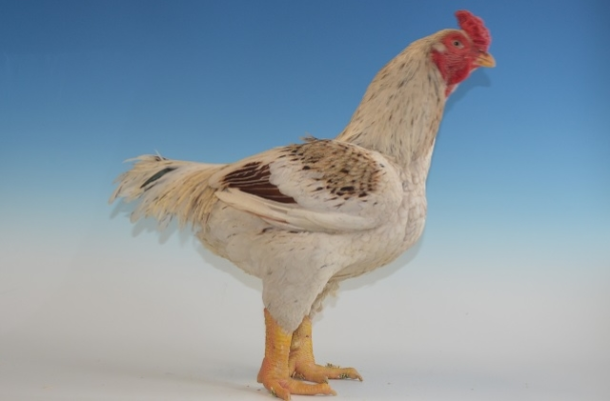THE BREED
The breed of poultry we now know as Indian Game has its origins hidden in the mists of time but it has been told by our fellow Victorian fanciers that a statement was made in 1886, to a Mr Montresor, a prominent Game Fancier of the time, by General Gilbert (later Sir Walter Raleigh Gilbert) to the effect that years earlier he had originated the breed in Cornwall by crossing Red Aseel, imported direct from India, with Lord Derby’s strain of Black Red English Game.
This type of bird seems to have first appeared outside the West Country in an “any other breed” class at the Crystal Palace Shows in 1858 and 1859. At that time the birds were far removed from what would become known as Indian Game being much more akin to a rangy Aseel. These first two shows were won by Mr John Pomroy of Callington, Cornwall, who was later to become the clubs first treasurer. It is interesting to note that he won the two selling classes in the first show when 91 cocks and 67 hens were in competition. It was said that John Pomroy was the main person, in conjunction with a few friends, including William Brent and John Frayne, to popularise Indian Game outside the West Country, so was a very important figure in the Club’s history.
Later observations and reports confirm that around 1870 to 1887 a further introduction of a breed termed “Pheasant Malays” was made to produce the rich black colour in Indian Game. These Pheasant Malay were probably a breed similar to that we now call Sumatra Game, albeit of a somewhat different type. It was written that these birds were “intensely black in the cocks and magnificently glossed in both sexes”. These birds formed the very bedrock of the breed and at this time interest was growing on the show front as numbers of fanciers began to grow. Several prominent showmen began to think about formalising and standardising the breed, the obvious move forward was to form a club to look after and promote the birds already widely termed “Indian Game”.
The Club was formed to look after three basic aspects of breeding and showing Indian Game, these being to look after the Breed Standard, to look after the interest of the members and assist where possible with regard to their interest in the breed and finally to promote the breed wherever possible by such means as encouraging new fanciers, producing articles, providing breed specials for shows and by holding a Club show every year. To emphasise this I would quote the first rule of the Indian Game Club, set down all those years ago and still the first club rule to this day. This is an exact copy from the 1899 club annual report.
“That this Society shall be called the “INDIAN GAME CLUB,” and shall include all varieties of the Breed. That its objects shall be to increase and cultivate the popularity of this most useful and fancy breed of poultry by articles in the poultry press etc., for the providing of classes at all the leading shows; and generally to promote and protect the interests of breeders and exhibitors of this variety”.
